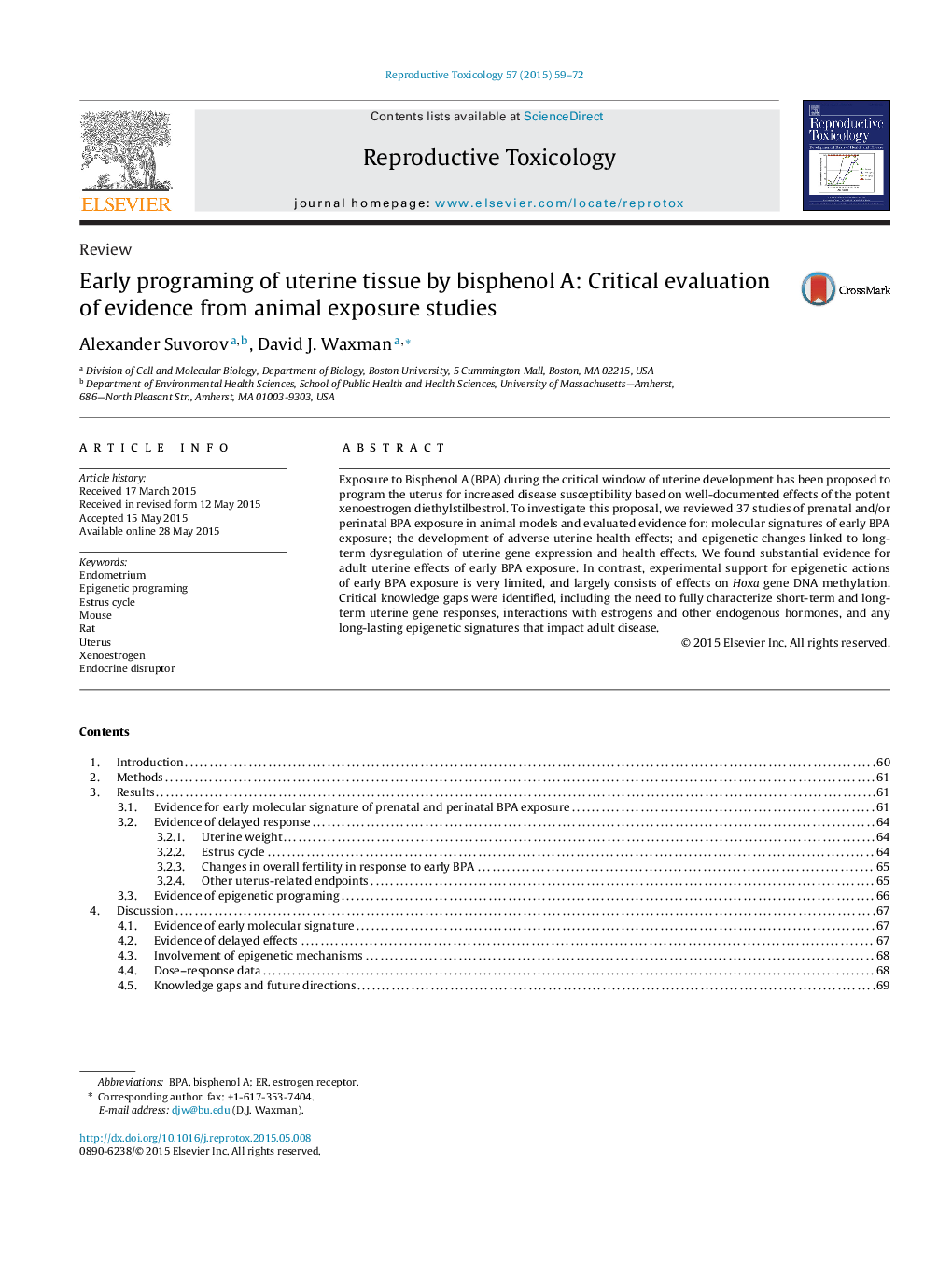| Article ID | Journal | Published Year | Pages | File Type |
|---|---|---|---|---|
| 2593386 | Reproductive Toxicology | 2015 | 14 Pages |
•Developmental uterine effects of Bisphenol A were analyzed in 44 experimental studies.•Developmental exposure to BPA leads to uterine abnormalities in adulthood in mice and rats.•Mechanisms of uterine programing are unknown although epigenetic mechanisms are likely involved.•Genome-wide data sets are needed to characterize changes in gene expression and epigenetic remodeling by BPA.•Examination of three time periods is needed: short-term response, delayed pre-pubertal, and longer-term adult time point(s).
Exposure to Bisphenol A (BPA) during the critical window of uterine development has been proposed to program the uterus for increased disease susceptibility based on well-documented effects of the potent xenoestrogen diethylstilbestrol. To investigate this proposal, we reviewed 37 studies of prenatal and/or perinatal BPA exposure in animal models and evaluated evidence for: molecular signatures of early BPA exposure; the development of adverse uterine health effects; and epigenetic changes linked to long-term dysregulation of uterine gene expression and health effects. We found substantial evidence for adult uterine effects of early BPA exposure. In contrast, experimental support for epigenetic actions of early BPA exposure is very limited, and largely consists of effects on Hoxa gene DNA methylation. Critical knowledge gaps were identified, including the need to fully characterize short-term and long-term uterine gene responses, interactions with estrogens and other endogenous hormones, and any long-lasting epigenetic signatures that impact adult disease.
